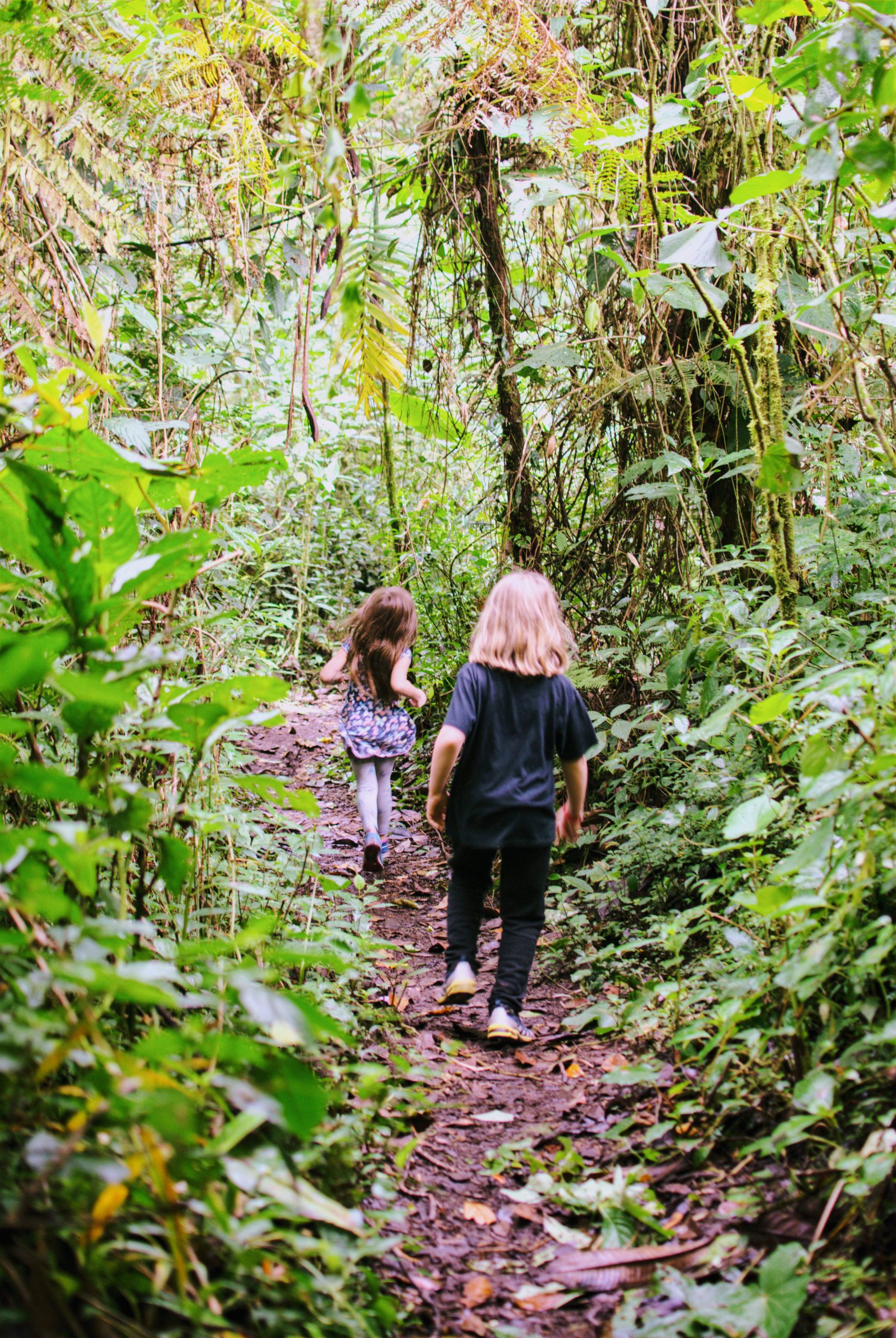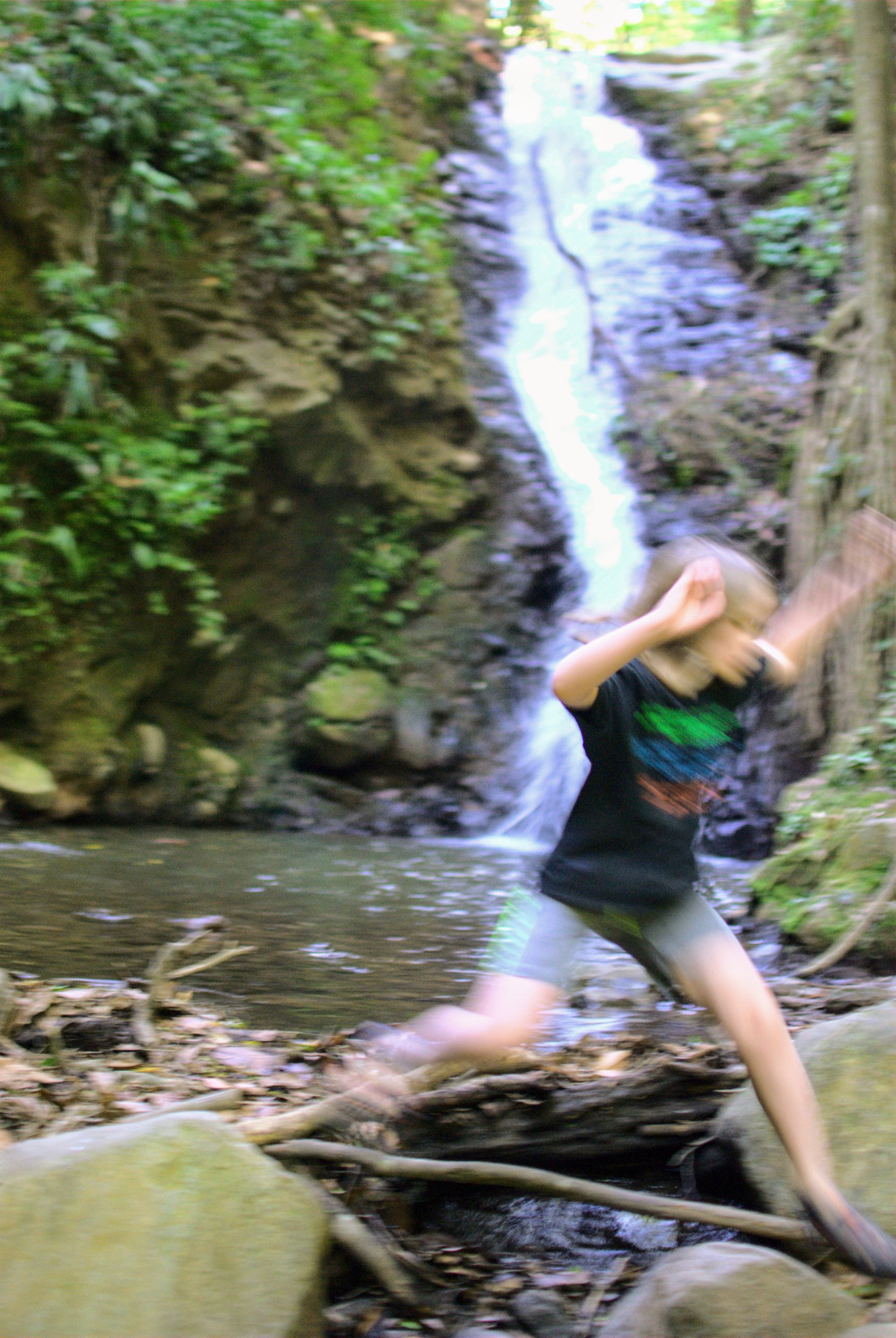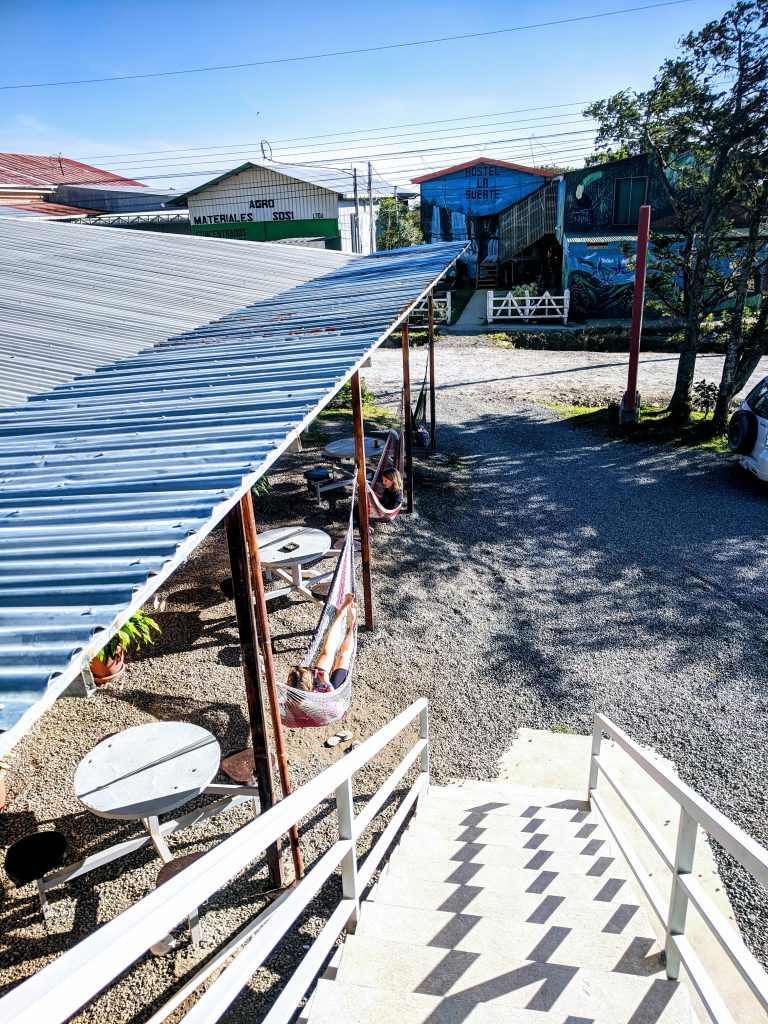This month, we took the kids on the trip of a lifetime–we went to Costa Rica for two weeks!
People keep asking how it was, and I feel like I don’t have a ton to say. It was….amazing. We saw seven sloths, 17 howler monkeys, several toucans, and countless iguanas. We didn’t really do a whole lot. We swam in the rivers, hiked in the forest, and played at the beach. We walked a ton, ate lots of fruit, read books. I left my computer at home and told all my clients that I was unavailable, and they respected that and didn’t pester me. It was just relaxing and wonderful.
I kept waiting to have that one day where everything would go sideways and wrong and we’d muscle through it on some faith that it would make a funny story later—but that never happened. Petra and Silas, normally so picky about where they sleep and what they eat, surprised me by finding ways to be flexible. Nothing and no one got lost or stolen or disastrously broken. We met kind people all over the place. Everything was easy, in ways I hadn’t thought to expect.
I had been to Costa Rica two other times. When I was 12, my parents took me and my brother there as a spring break trip. Our school had raised money to support the efforts to buy land for the Children’s Eternal Rainforest project. We had spent the whole year learning about the rain forest. So my parents decided to take us there. I remember it being completely magical.
In 2008, JC and I went. We had a great time, and we had always talked about going back.
Petra and Silas are obsessed with the book series Wings of Fire, by Tui T. Sutherland. It is about dragons who live in different ecosystems and are adapted to those places. There are desert dragons who breathe fire, sea dragons who can stay underwater for a very long time, etc. Our favorites were the rain forest dragons—peaceful vegetarians who enjoy naps in the sun and have pet sloths. The kids wanted to go to a real rain forest. And we realized, that was a thing we could do.

We started by flying into Liberia. When JC and I went before, we flew into San Jose, and that was the only place in our whole trip we felt unsafe. We couldn’t get out of there fast enough. Liberia was much calmer. It’s a pretty boring town, really—every list of “things to do in Liberia” is like, leave there and drive an hour to the rain forest/rivers/beach. So that’s what we did.

We stayed at a hostel that night, and took a shuttle to Santa Elena the next morning. Right away, we noticed changes from our previous trip. The roads near the bigger cities are now similar to ones you might travel anywhere in the US—paved four-lanes.

Lots of things had become more convenient. We had wifi everywhere we stayed; we could book things and comparison shop on our phones, Google maps was with us everywhere. It was nice, especially for our first international trip with the kids, but it felt like a lot less of an adventure than it did before.

At one point, the driver pulled our van over to the side of the road and asked us all to get out. I thought there was something wrong, but then he pointed to a tree across the road. It was full of howler monkeys. We counted 15, including three babies. They weren’t making much noise, but we stood there and watched them move through the trees for a long time.

The first day in Santa Elena, we walked up to the herpetarium, where we saw snakes, frogs, and turtles. I’m not much for reptiles, but everyone else enjoyed seeing them up close. We came back a couple days later to see them at night, and that was actually very cool. The nocturnal snakes were awake and moving. They seemed to be playing with each other, which I didn’t think snakes did. We watched a rattlesnake dance with its own reflection for a long time, and eyelash vipers coiled around each other as if they were trying to tie a knot.



We kept spotting interesting public art all over the place. It seemed like every building had a mural of sloths or butterflies.
That evening, we went on a guided night tour in the rain forest. We had a good night (so much depends on luck). We saw two crab spiders building their webs, countless leaf-cutter ants, a bark scorpion (it glowed under UV light like a cheap Halloween decoration), and a tarantula. We saw a sloth far off in a tree—it could have been a ball of lint for all we could tell. But on the bus ride home, we stopped near a tree where a sloth was moving through the branches, eating leaves! I couldn’t get a picture of it because of people and the light, but it was a very cool experience to be only ten feet from an active sloth!
Petra spotted a snake, in the rain forest, in the dark. The guide at first thought she was just being a cute little kid; he thought it was a vine. Then JC said, “I think that’s an eyelash viper.” And sure enough, it was. It was far enough away that nobody was in danger, but close enough that we were able to see it clearly, once we had it pointed out. Petra was a little freaked out by it, I think. She hadn’t previously given much thought to the deadly snakes that might be lurking in any tree.
Everywhere we went, the kids were fascinated by how available and good fruit was. They pointed out trees bearing bananas, papayas, coconuts, and guavas. They tried every fruit anyone offered them, and every time we passed someone selling fruit out of their truck, they’d want to buy some. Silas especially loved getting a coconut with a hole in it so he could drink the coconut water. Petra was obsessed with mangoes.


The biggest reason to go to Santa Elena is the cloud forest. It’s as magical as I remembered it. The trees create a ceiling above us as we walk through. I’m drawn to the way that each tree is a forest unto itself, supporting a community of tiny plants. They have the same appeal as dollhouses—the magic of miniatures. The scale of the forest, both big and small, is epic.







































Another day, we hiked about a mile and a half up a steep road to a ficus tree we had heard about where you could climb up the middle of it. The ficus is also called the strangler tree, because it begins as a parasite on another tree, wrapping its roots around that tree until it completely consumes it. Eventually, the host tree dies, and decomposes, leaving the hollow ficus. This whole process can take about five hundred years. Ficus were everywhere in the rain forest, but ones that had this hollow quality were rare. We found it, and it was worth the hike. I climbed the highest in it, but everyone gave it a try. Getting to see the forest from a good sixty feet up was exhilarating. I had hoped to do the hanging bridges, but nobody else was into it, so we didn’t. This was a neat substitute, though. The kids decided that Kutelopes probably originated in the rain forest and had their dens in ficus trees.















Near the ficus, we found a trail that led to a few more spots for exploration, including a vine for swinging.
That afternoon, we took a taxi to a waterfall in Monteverde. We waded and climbed on the rocks. I kept thinking, I can’t believe this is February, and I’m playing in a river. The light through the trees was golden and magical.











On our walk back from the waterfall, we passed the Children’s Eternal Rainforest. We didn’t go in, but we could look over this land from a bench at the side of the road. I found the experience surprisingly moving—to have been part of a project like that, when I was not much older than Silas, and to see that it is a real thing that still exists, was amazing. Sometimes the problems of our world are overwhelming and seem impossible to solve, but some small actions do make a real difference. The money that ecotourism has brought to Costa Rica has allowed them to invest in their land. People are proud of where they live, and eager to share it with visitors. The forests that have been preserved or reclaimed are thriving. My little school in West Virginia was part of that. It seems impossible, but it is true.




…And then we took a shuttle, then a boat, then another shuttle to go from Monteverde to La Fortuna. The boat ride was a lot of fun. The kids were spotting egrets on the shore, reaching their hands to the water, and laughing the whole way. Petra made me switch seats with her so she could get more of the spray on her face.















Be First to Comment